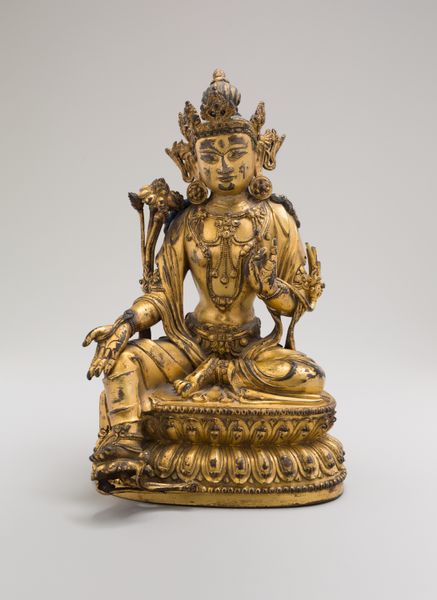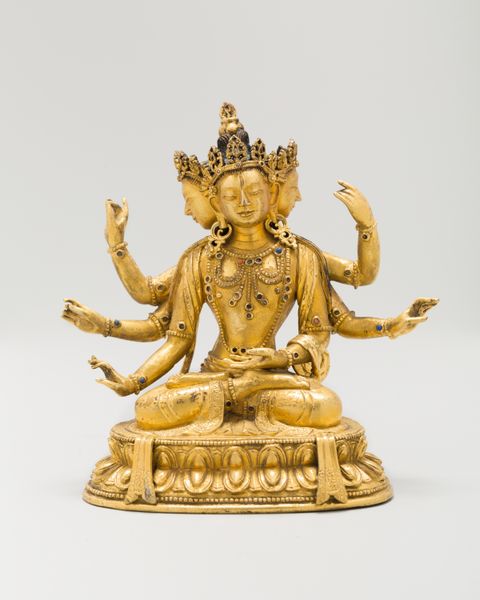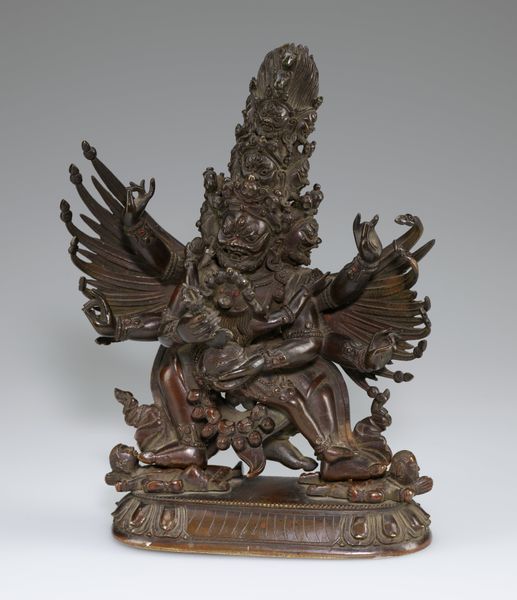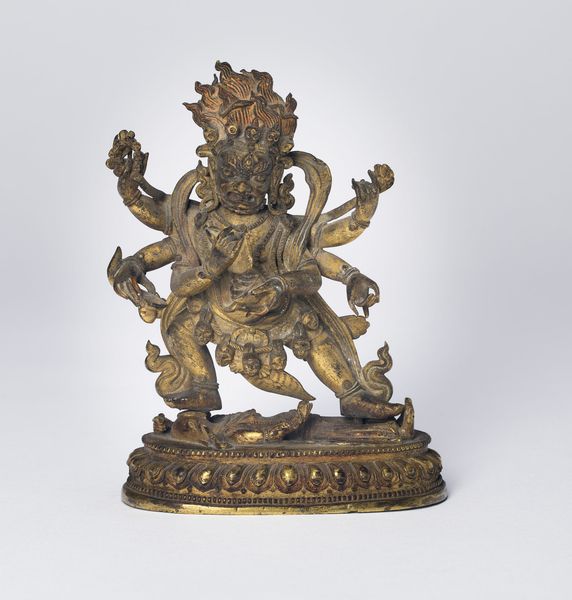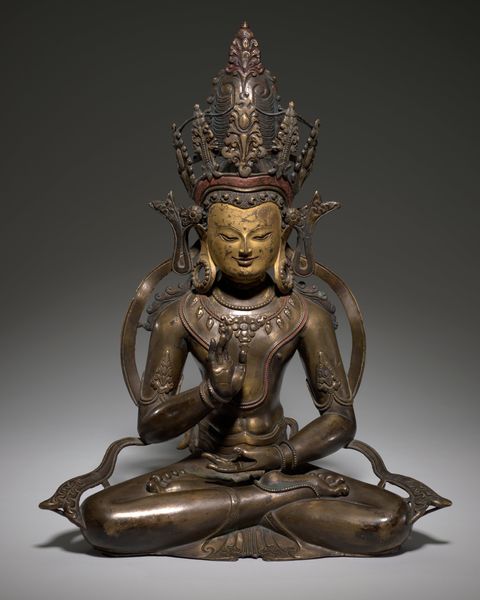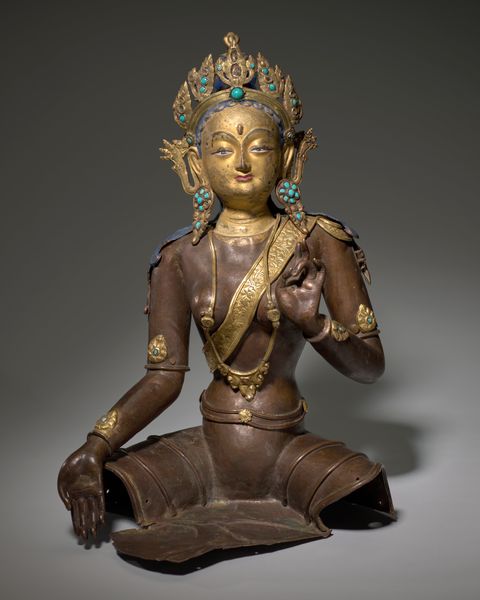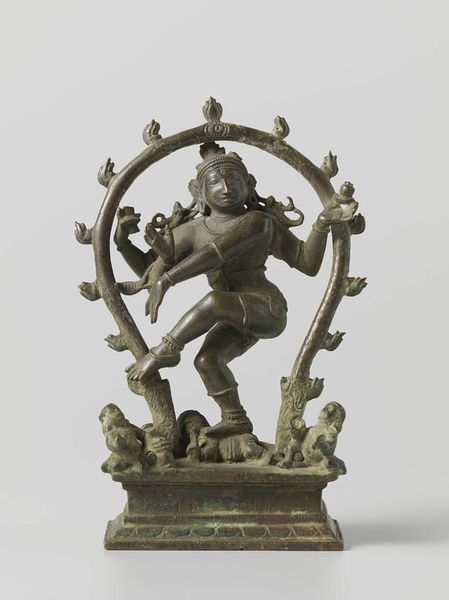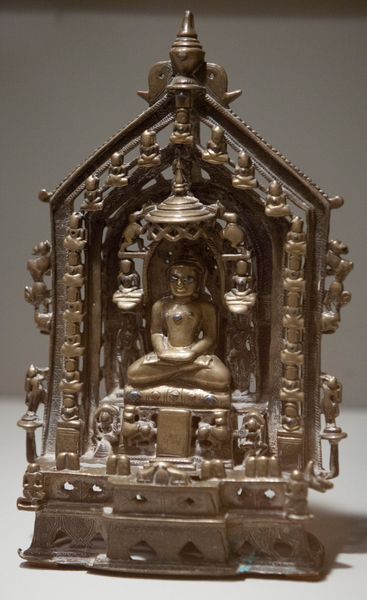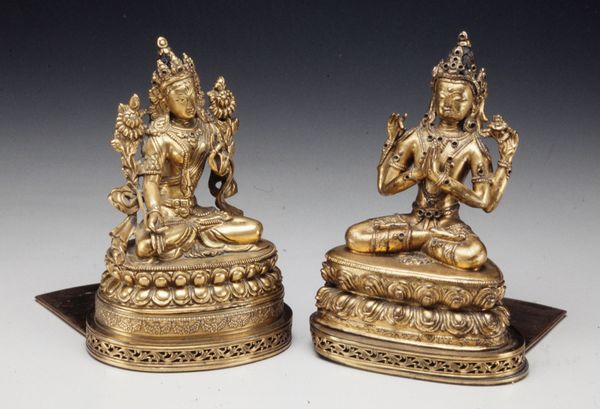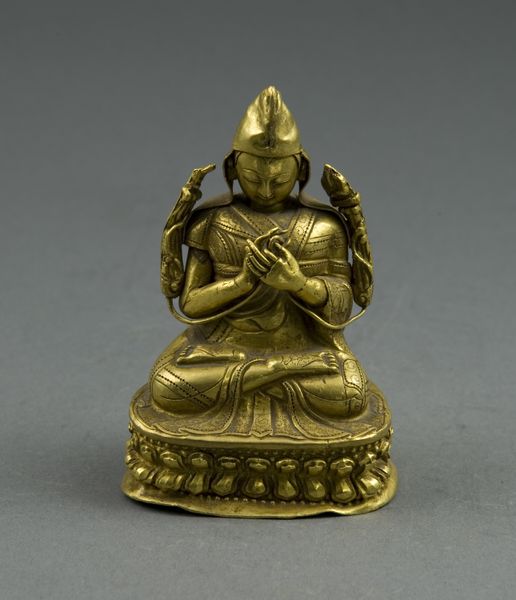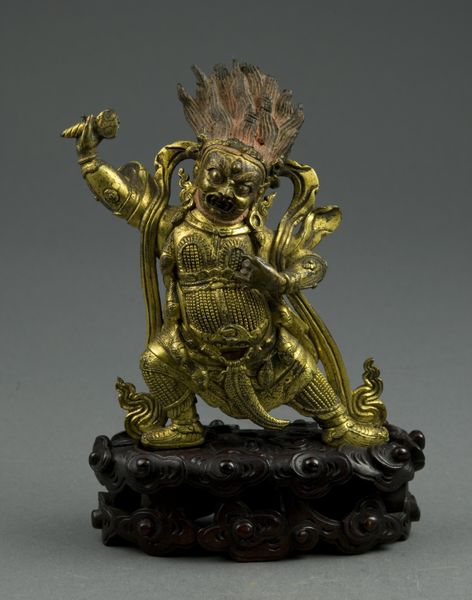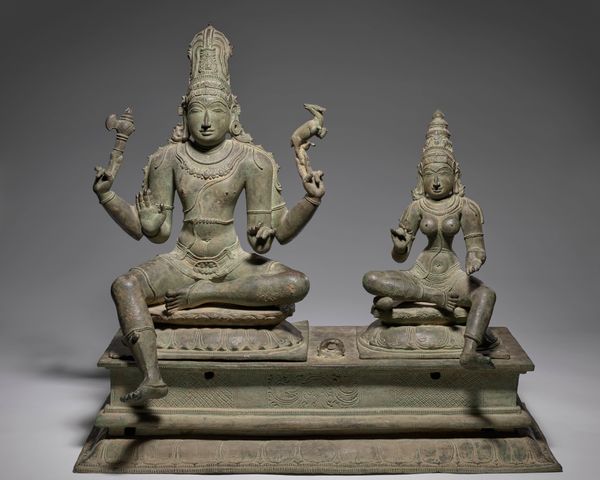
bronze, sculpture
#
sculpture
#
asian-art
#
bronze
#
sculpture
Dimensions: 7 5/8 x 6 3/16 x 3 5/16 in. (19.37 x 15.72 x 8.41 cm)
Copyright: Public Domain
This sculpture, Chakrasamvara Embracing Vajravarahi, of unknown date and origin, portrays a profound concept within Vajrayana Buddhism: the union of wisdom and compassion. This gilded bronze sculpture depicts Chakrasamvara, a wrathful deity representing compassion, embracing his consort Vajravarahi, symbolizing wisdom. Consider the historical context, where tantric practices emphasized the integration of seemingly opposing forces for spiritual enlightenment. The androgynous nature of the embracing figures challenges conventional gender roles, suggesting a transcendence of duality. The multiple arms holding various implements signify the deities' potent abilities to overcome obstacles and guide practitioners toward enlightenment. Note the figures beneath their feet, representing the subjugation of ignorance. Such imagery, while visually arresting, invites a deeper contemplation on the interconnectedness of existence and the transformative power of embracing all aspects of oneself. As you reflect on this sculpture, consider how it challenges societal norms and offers a vision of holistic integration.
Comments
minneapolisinstituteofart about 2 years ago
⋮
The embrace of the esoteric deity Chakrasamvara and his consort, Vajravārāhī, symbolizes the union of wisdom and compassion, an important principle of Vajrayana Buddhism. The four-faced, twelve-armed god holds Vajravārāhī in his arms while trampling on the Hindu deities Bhairava and Kalaratri, who represent ignorance and evil. The exquisitely finished deities are adorned with crowns and garlands of skulls and severed human heads. Chakrasamvara holds a thunderbolt and a ghanta (bell). Other attributes include the severed head of Brahma; a kapola (lasso); a damaru (ax); trident; sword; and skull cup. The image bears an imperial inscription dating it to the reign of the Yongle emperor of China. The Yongle (r. 1403–24) and Xuande (r. 1426–35) emperors sought services of Tibetan lamas, and missions to and from China involved the exchange of gifts, Buddhist images, and ritual objects.
Join the conversation
Join millions of artists and users on Artera today and experience the ultimate creative platform.
